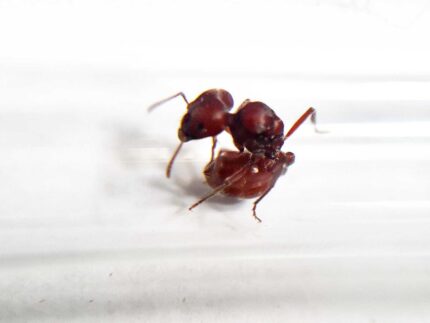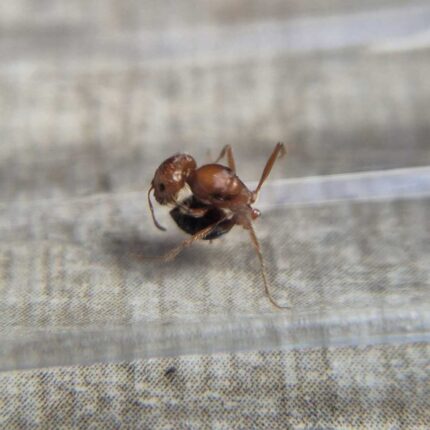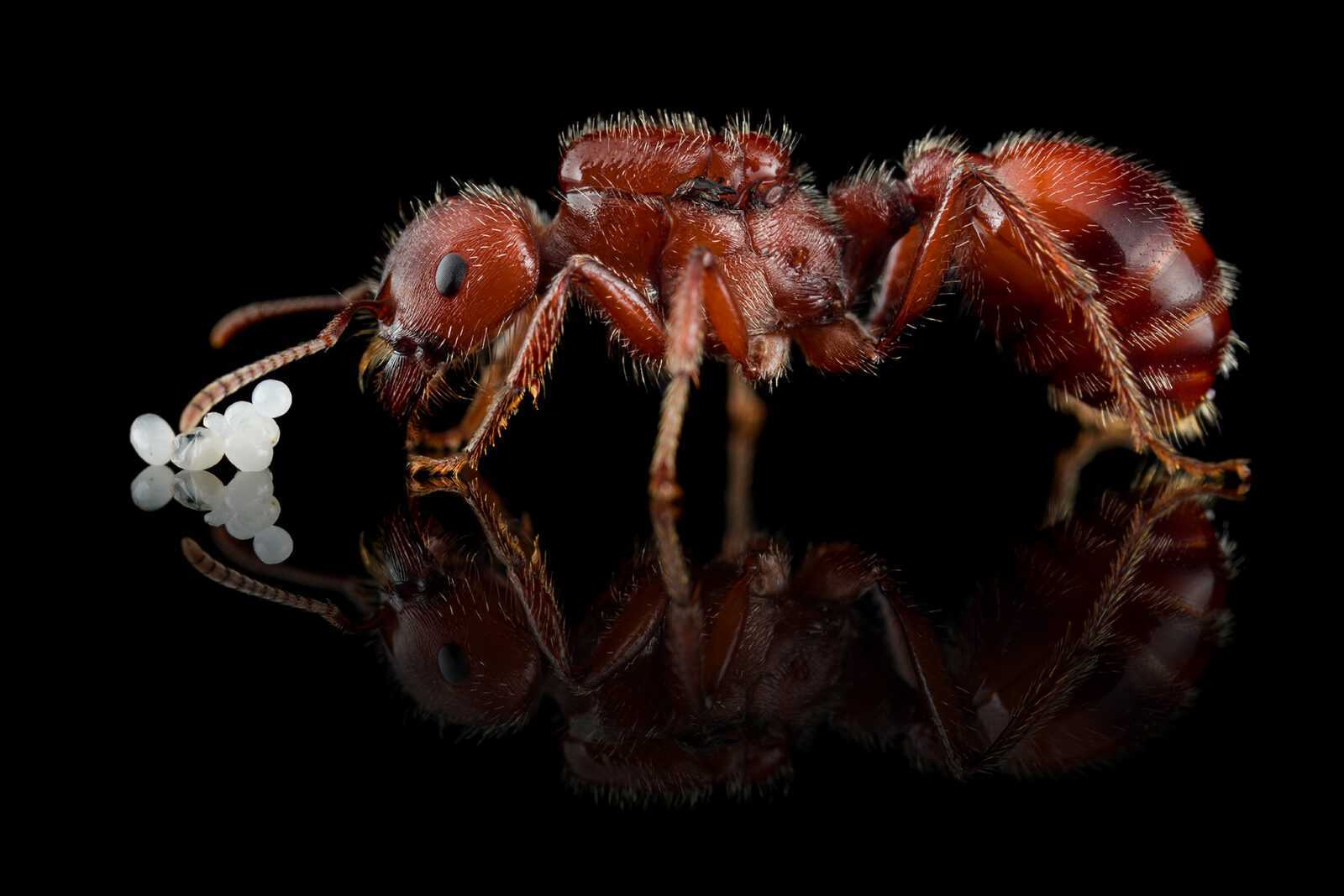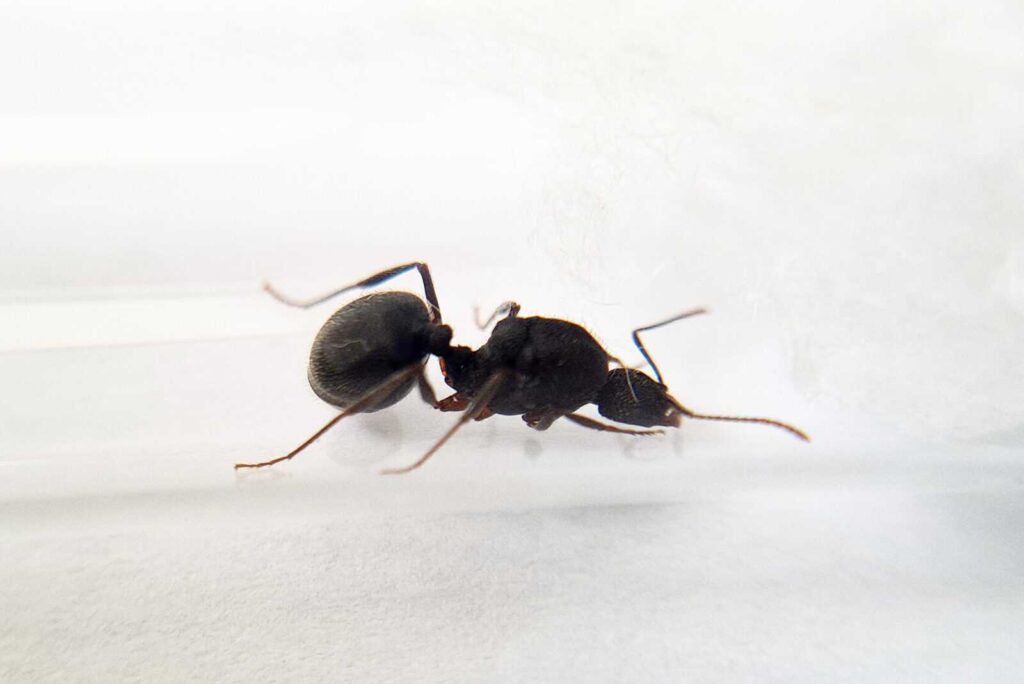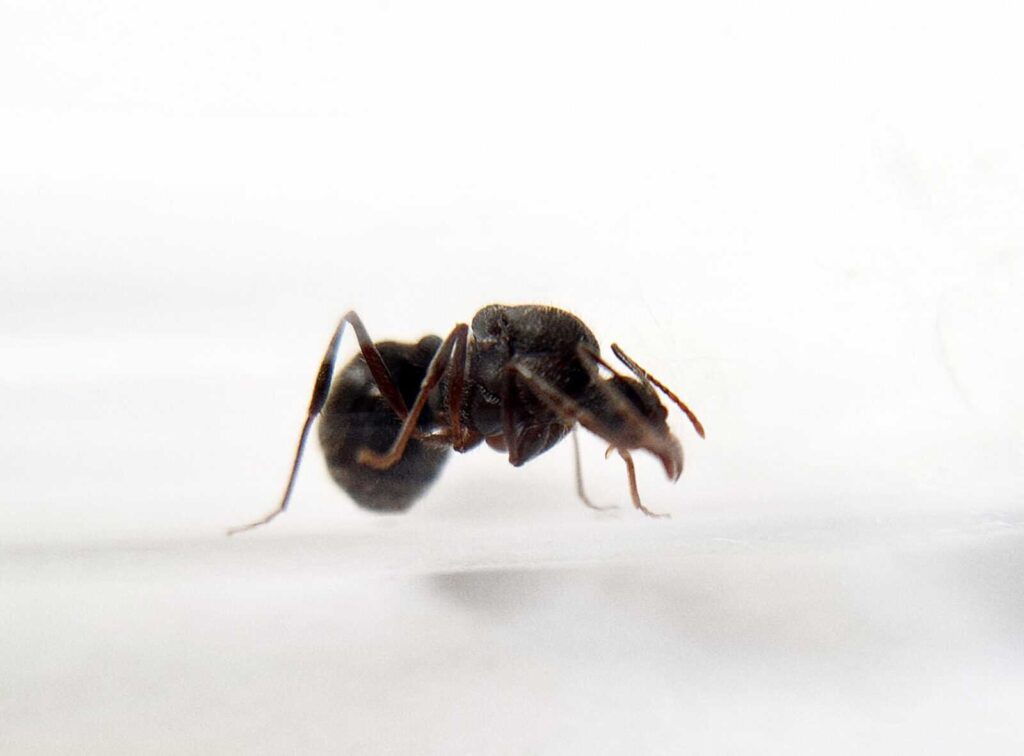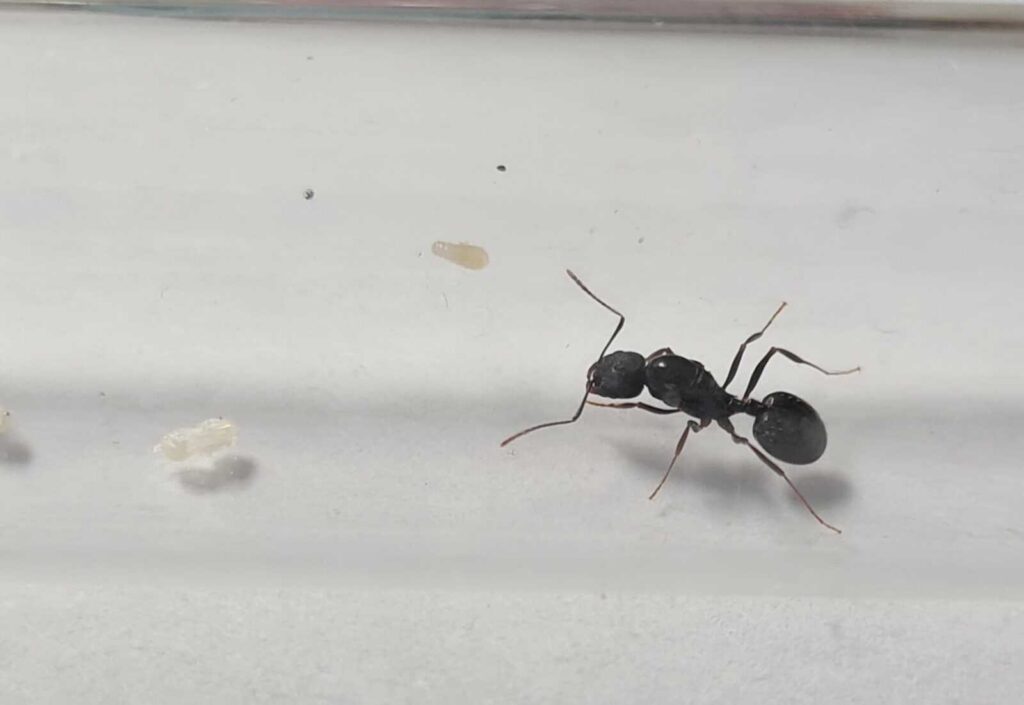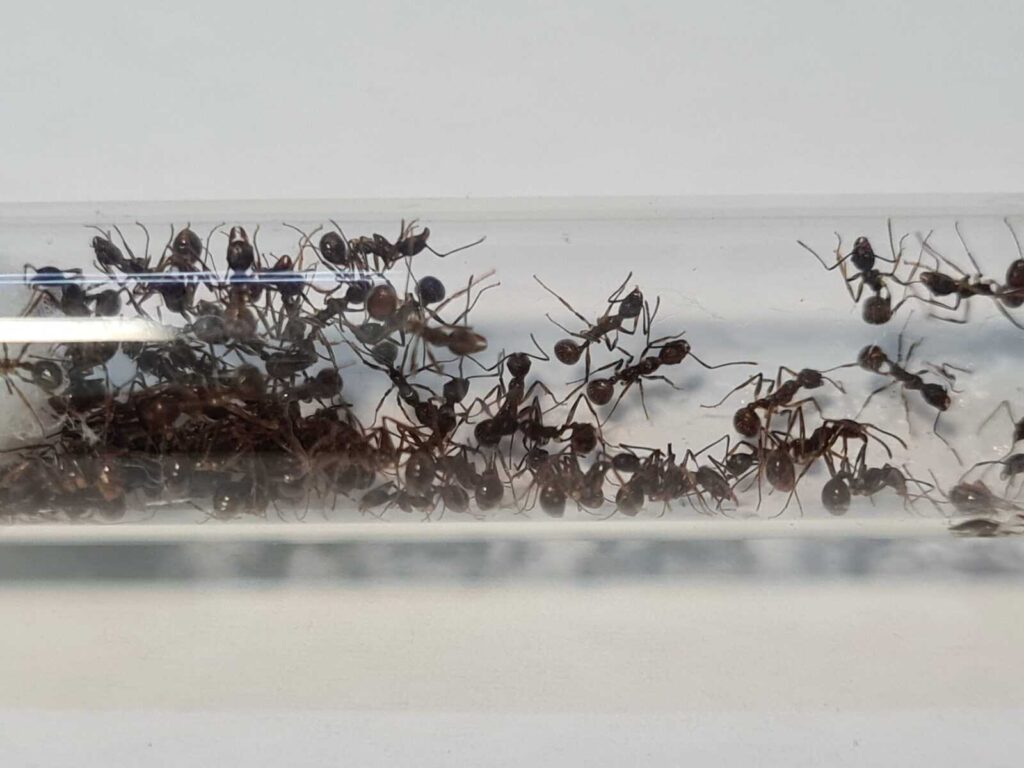Pogonomyrmex barbatus
359,90 zł – 709,90 zł
Worldwide shipping
Free delivery over 500 PLN
The highest quality of goods
Live delivery guarantee
24/7 Personal Support
Fair Prices
Description
Pogonomyrmex barbatus is a monogynous ant species with a colony size of up to 10-15 thousand individuals. They have a medium development rate. The queen is 10-13mm in size, while the workers are 6-9mm. They have a red-brown color. Their nutrition consists of food insects and seeds. They prefer a humidity level of 40-60% in the arena and 50-60% in the nest.
Additional information
| Behavior | |
|---|---|
| Difficulty in breeding | |
| Origin | |
| The size of ants | |
| Wintering |
Pogonomyrmex barbatus: The Mighty Sting Ant
If you’re in search of an impressive ant species to add to your collection, look no further than Pogonomyrmex barbatus. These fascinating creatures, also known as the red harvester ants, are known for their monogynous colony type and their powerful stings. Read on to learn more about the incredible Pogonomyrmex barbatus and how to care for them.
Colony Type and Size
Colony Type: Monogyny
Colony Size: Up to 15000 workers
Development Speed: medium
Size and Color:
- Queen: 10-13 mm
- Workers: 6-9 mm
Size and Color
Recognized for their vibrant red-brown hue, the Pogonomyrmex barbatus ants captivate viewers with their varying intensity of color. The queen ants measure between 10-13mm, while the worker ants are slightly smaller, measuring 6-9mm.
Nutrition
- Food insects (such as cockroaches and crickets) dead, or live if colony is big
- Syrup (a mixture of water and honey or sugar, with a ratio of 4/3 water:1)
- Fruits and vegetables
- Jelly
- Cooked chicken without salt, shrimps
- Honey
- Seeds
Don’t forget to check out our food products to ensure a well-balanced diet for your colony!
Humidity and Temperature
- Humidity: Arena: 40-60%, Nest: 50-60%
- Temperature: Arena: 22-30 °C, Nest: 22-26 °C
An extraordinary feature of Pogonomyrmex barbatus ants is their powerful sting. In fact, their sting is considered one of the most potent among ant species, ranking at a level 3 on the Schmidt Index. This remarkable defense mechanism serves as protection for the colony and ensures their survival in their natural habitat.
Recommended Nests
When it comes to providing a suitable nesting environment for Pogonomyrmex barbatus ants, there are several materials that work well. Acrylic, cork, plaster, and aerated concrete are among the top choices for nest construction. It is crucial to maintain a humidity gradient within the nest, ensuring that some chambers remain consistently dry. This mimics the ants’ natural habitat and promotes their overall well-being.
Conclusion
Pogonomyrmex barbatus ants are a truly captivating species that will undoubtedly captivate any ant enthusiast. Their vibrant red-brown color, impressive colony size, and formidable sting make them a standout amongst ant species. By providing them with the right environment and a balanced diet, you can ensure the growth and prosperity of your Pogonomyrmex barbatus colony. So, why wait? Embark on this enthralling ant-keeping journey and experience the wonders of Pogonomyrmex barbatus firsthand.


